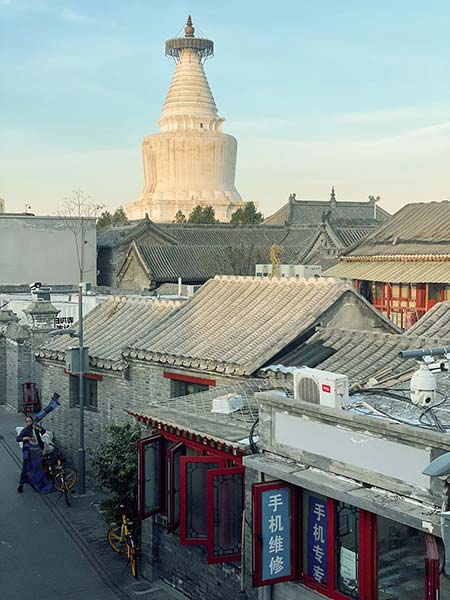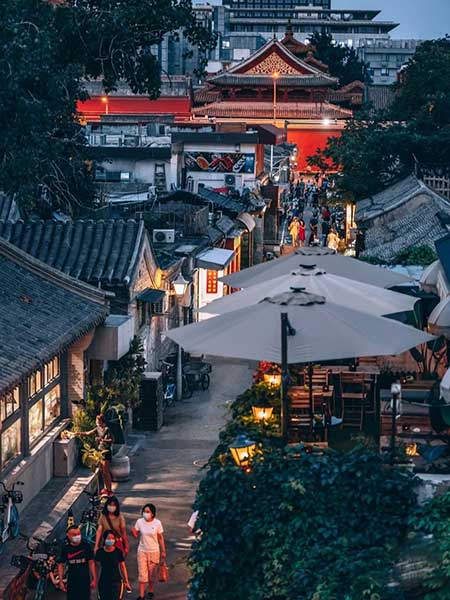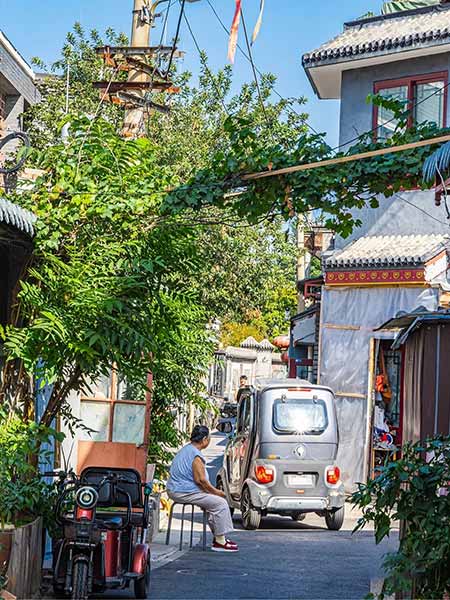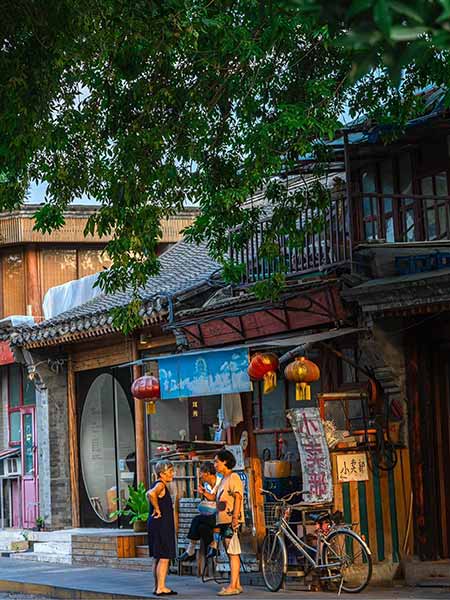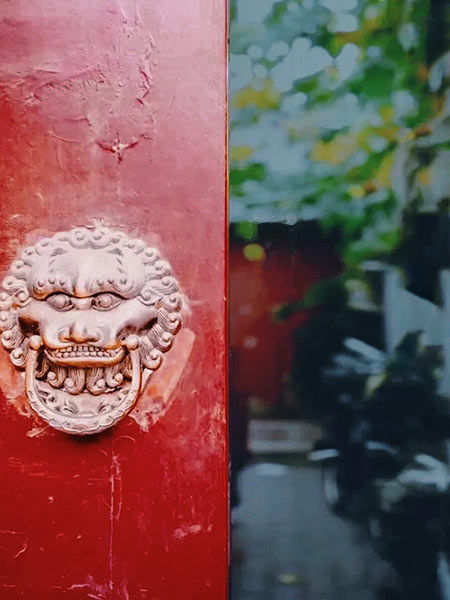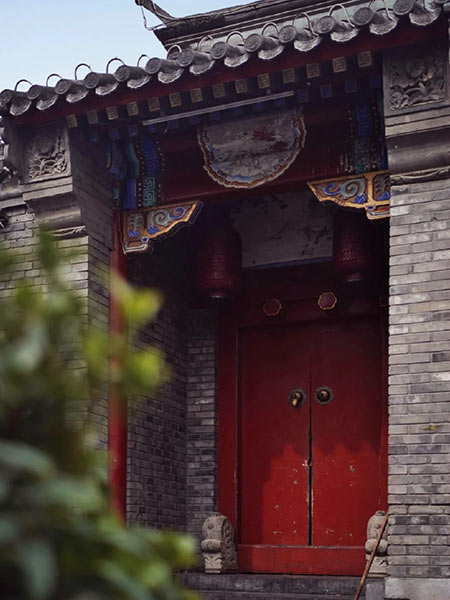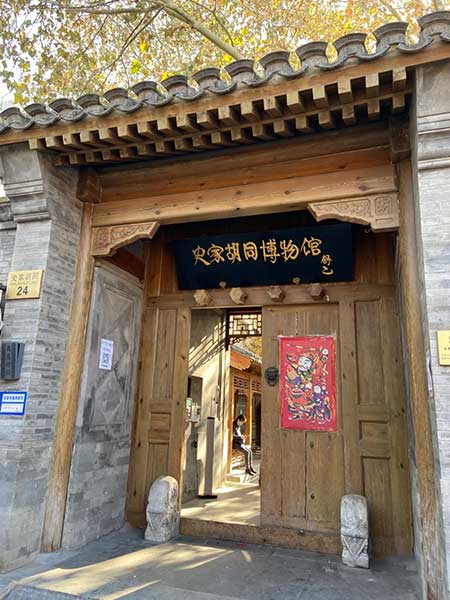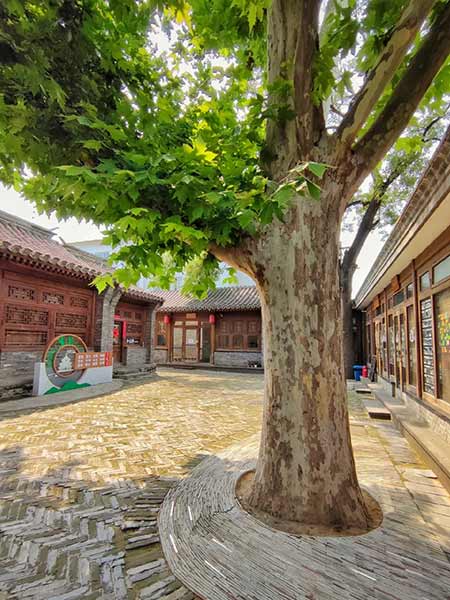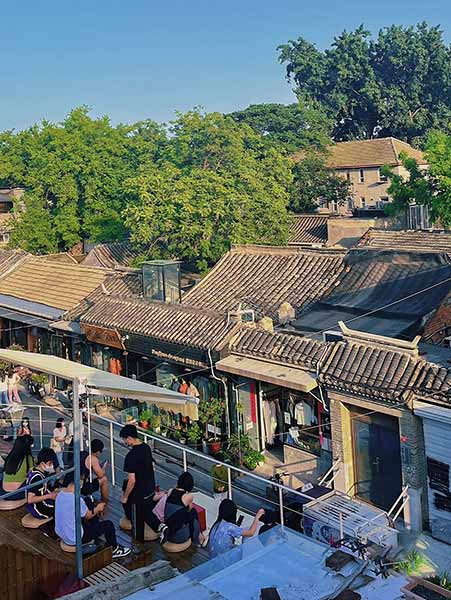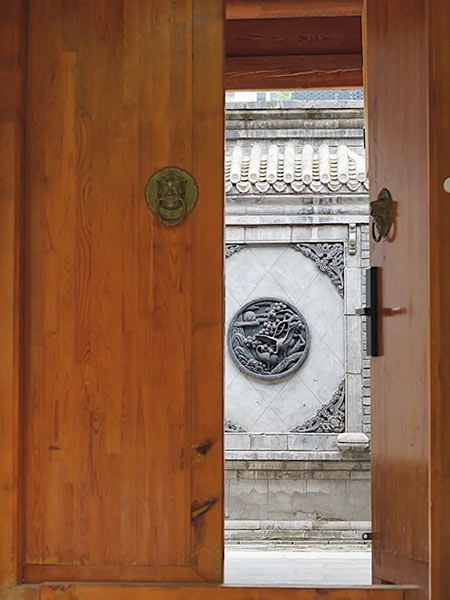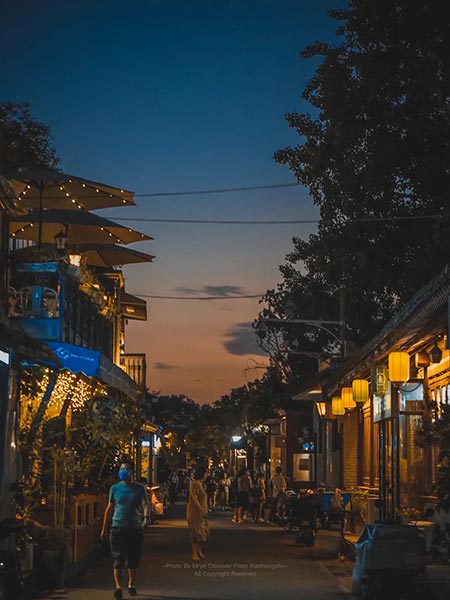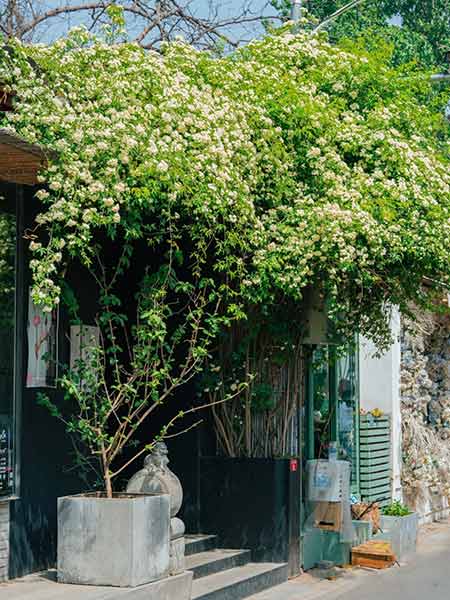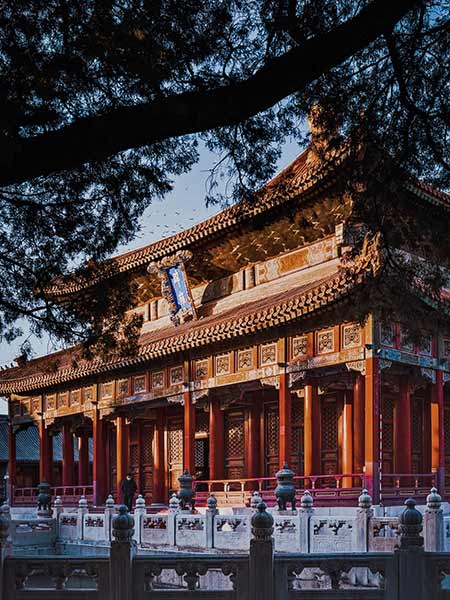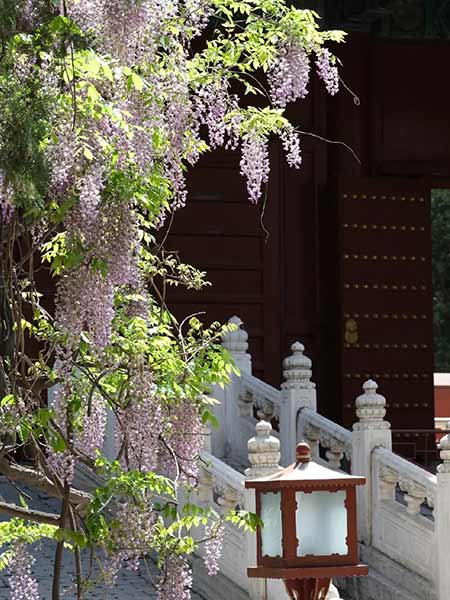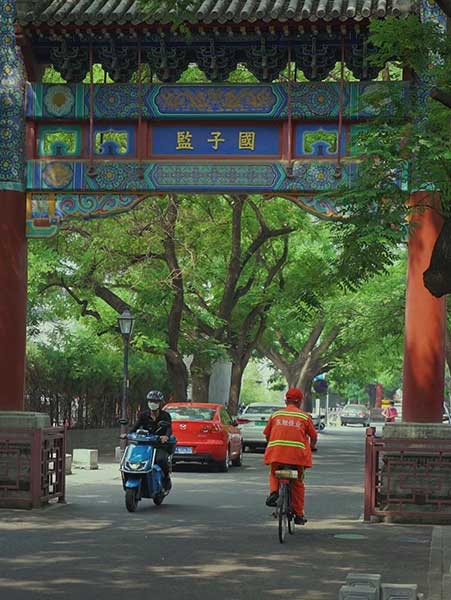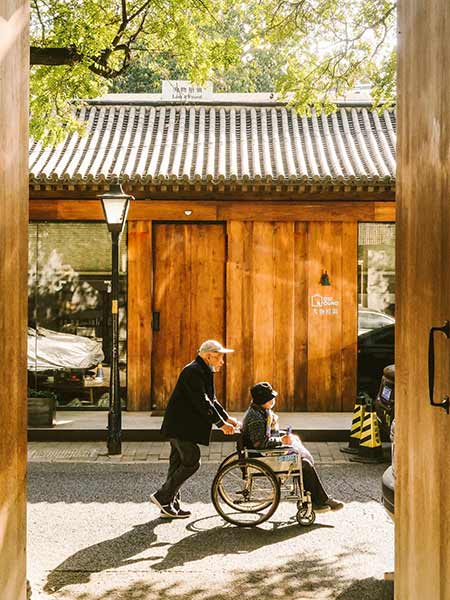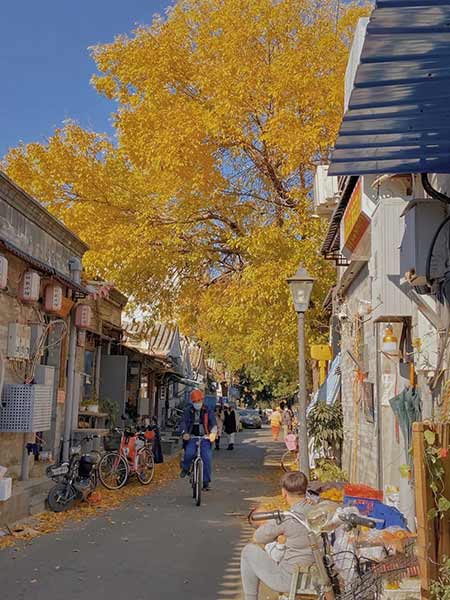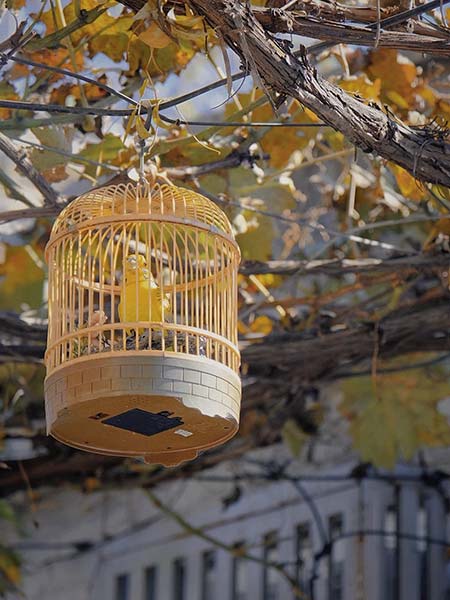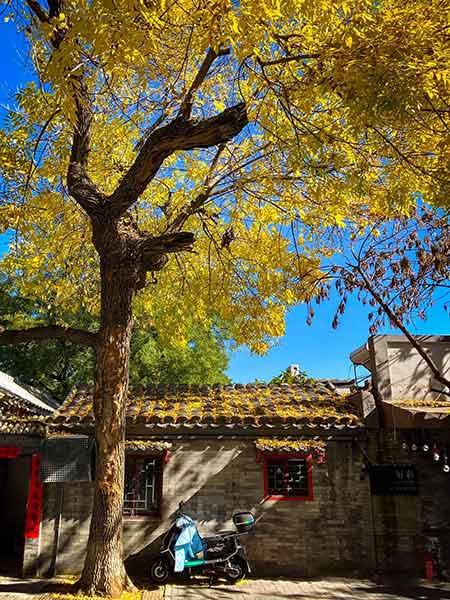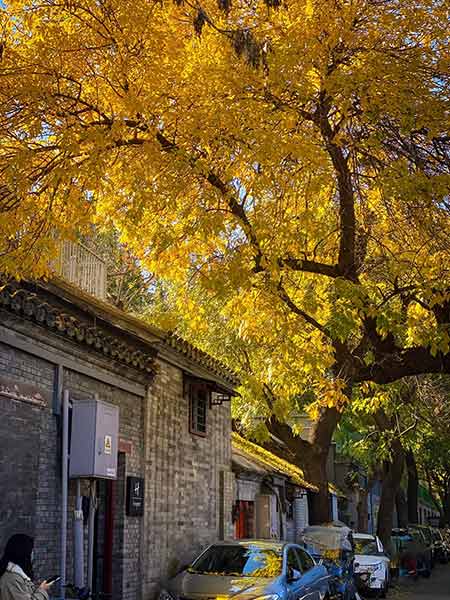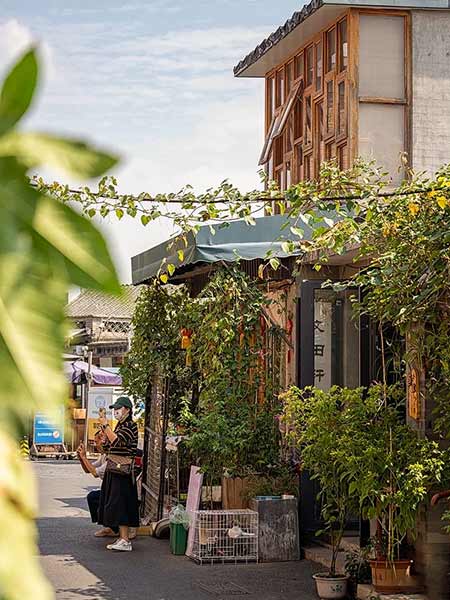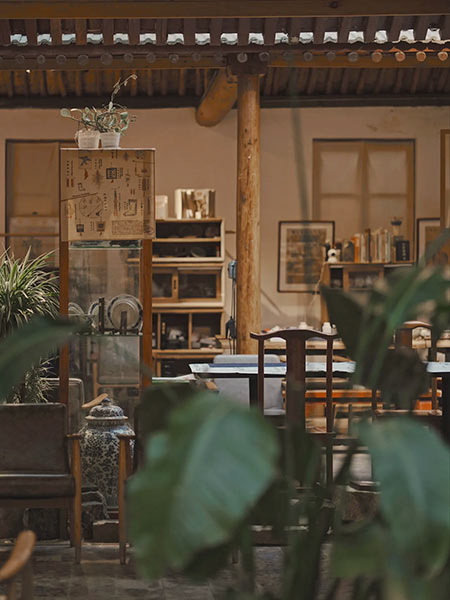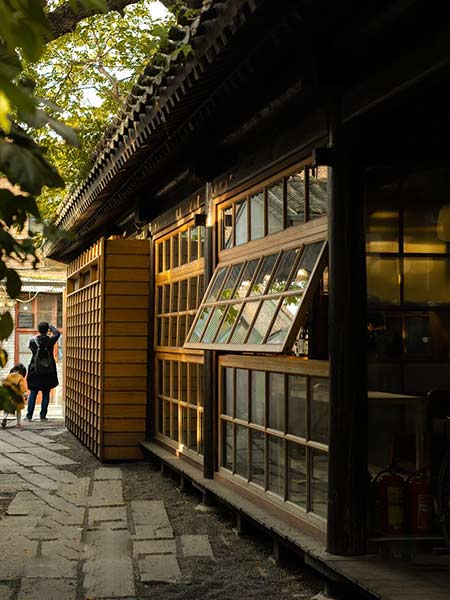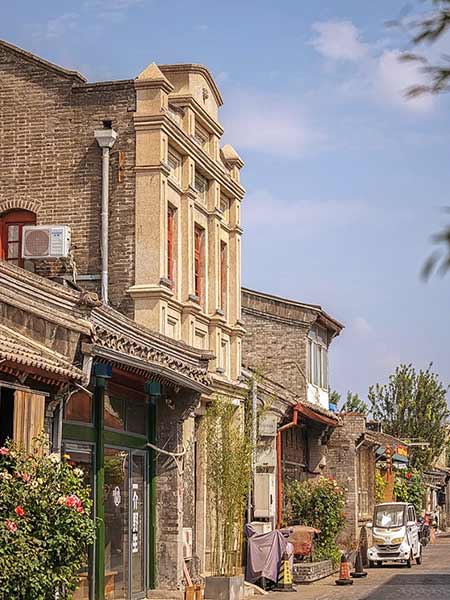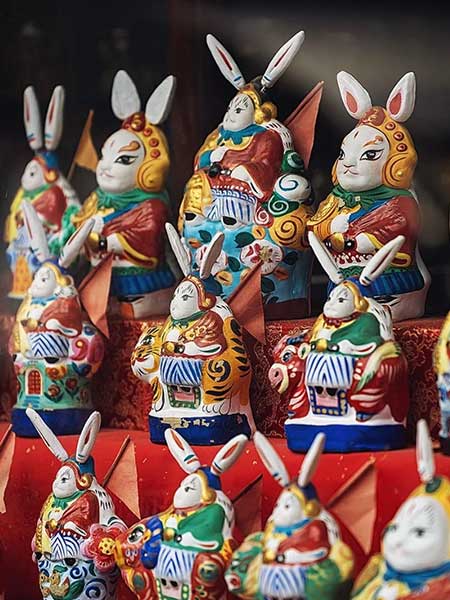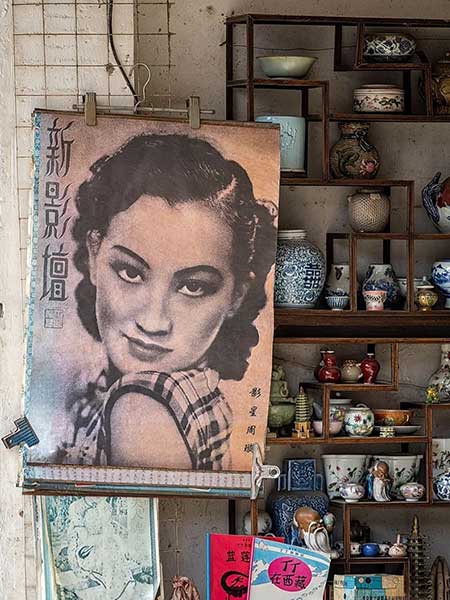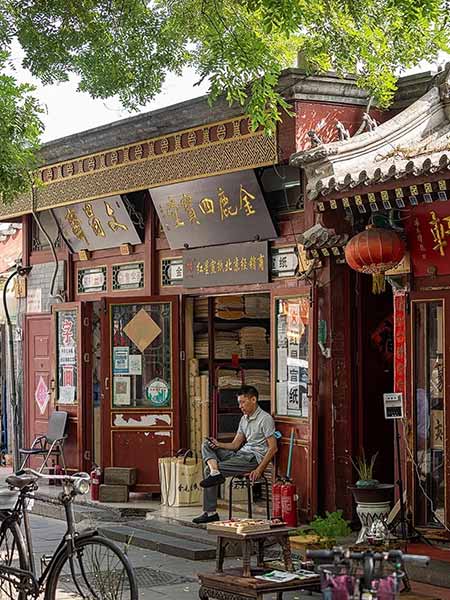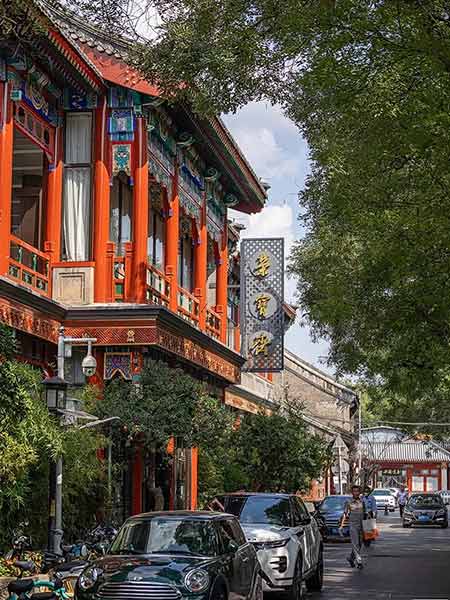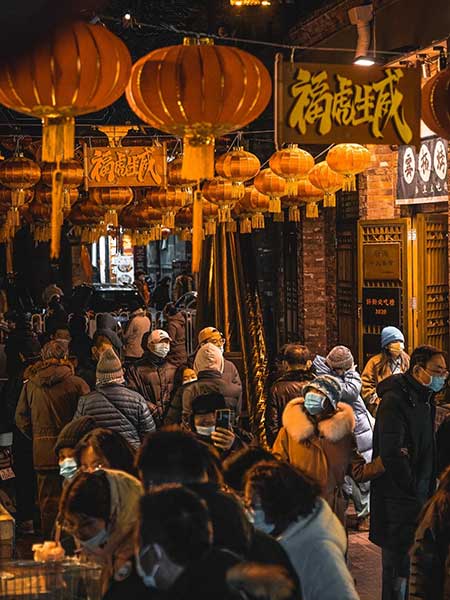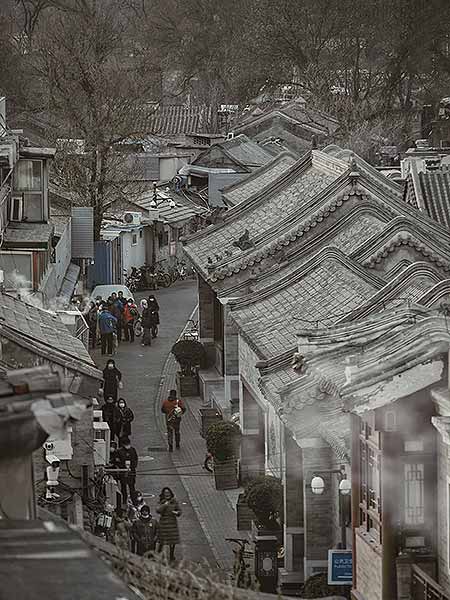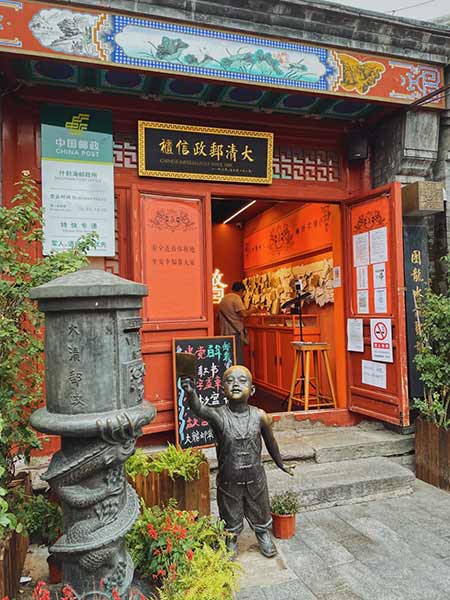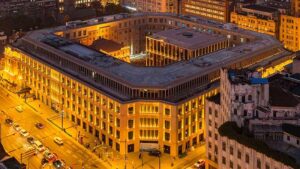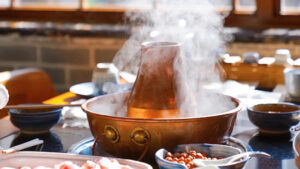Home » Beijing » How to plan a trip in Beijing Hutong?
Beijing, the capital of China, is an ancient city with a history of over 3,000 years. In addition to the magnificent Chinese royal monuments, the Beijing hutong, the areas where the old Beijingers lived, also document the city’s history and culture.
What is a Hutong in Beijing?
In 1403 A.D., the Chinese Ming Emperor Zhu Di rebuilt the city of Beijing on a large scale before moving the capital there. The imperial palace, the Forbidden City, was located in the centre of the city, and all other buildings were neatly and symmetrically arranged around it. The alleyways between the residences were called ‘Street’, ‘Hutong’, and ‘Lane’ according to width. By 1553, there were 459 hutongs in the city. As the population increased and the city grew, Beijing had more than 3,600 hutongs in 1986. Nowadays, these alleyways in the old city are narrow for the expanding modern Beijing metropolis, so people classify these “streets, hutongs and lanes” as hutongs.
Are there still Hutongs in Beijing?
After nearly forty years of rapid development, Beijing is now a modern metropolis. Hutongs are located in the heart of Beijing, and their narrow and old condition is no longer suitable for modern traffic. There was a time when the number of Hutongs was disappearing at a rate of 50 per year. Today, the number of surviving Hutongs in Beijing is 950. The question of how to preserve Hutongs with historical and cultural values is a problem that people face.
Why is Hutong the must-see attraction during your time in Beijing?
The Hutongs are not only an alley for urban traffic but also a place where ordinary Beijingers live and an essential stage for the historical and cultural development of the city. It is a critical stage in the historical and cultural development of Beijing. It is like a museum of folk customs, branded with imprints on people’s different social lives. The Hutongs are full of famous monuments, and when you walk through them, you seem to be reading an encyclopedia about Beijing. Many of the bricks and tiles in the hutongs are hundreds of years old. From each hutong courtyard, large and small, you can learn about the life of Beijing citizens, including their lifestyles, interests, and neighbourhoods.
The best Hutongs in Beijing, their highlights and recommended trip route
#1: Shi Jia Hutong (史家胡同)
The 600-meter-long Shi Jia Hutong has a history of more than 700 years. The buildings in the hutong are neat and well-built, mostly large mansions, where many famous figures of old Beijing lived. The Ruyi-shaped carved window frames, the red-painted gates, every green brick and every grey tile highlight the years of the old Beijing city.
The site of Shih’s Primary School was once an examination centre for the Qing Empire’s selection of students to study in the United States. In the early 20th century, the corruption of the Qing government inspired young students to study in advanced industrial countries. Students with patriotic passions flocked to Japan and the United States.
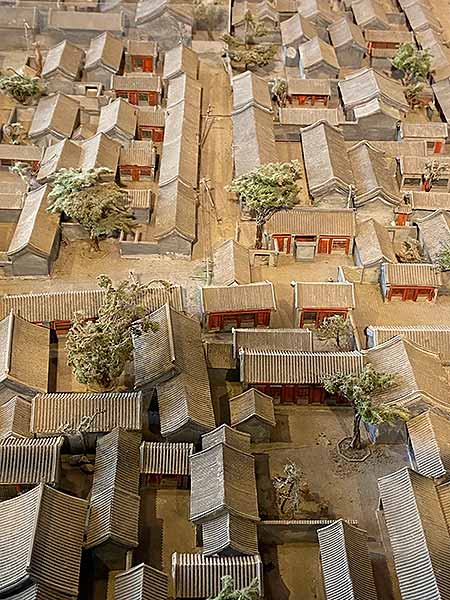
Beijing Hutong Museum
This courtyard is the former residence of Shuhua Ling, one of the “three most talented women in Beijing,” along with Huiyin Lin and Xin Bing. It was once a place where Beijing celebrities gathered. There are 130 1:25 miniature models of courtyards, and you can also hear more than 70 kinds of hutong sounds, such as the hawking of old Beijing vendors walking the streets.
Address: No.24 Shi Jia Hutong
Opening time: 9:00-16:30 (Closed on Mondays)
#2: Wudaoying Hutong (五道营胡同)
Wudaoying Hutong used to be a place for stocking up on soldiers. After the founding of New China in 1949, the people who built the old Beijing city gate, Andingmen, settled here. Today, the hutong has developed into a commercial street with unique creative stores, restaurants, and coffee shops based on the old buildings.
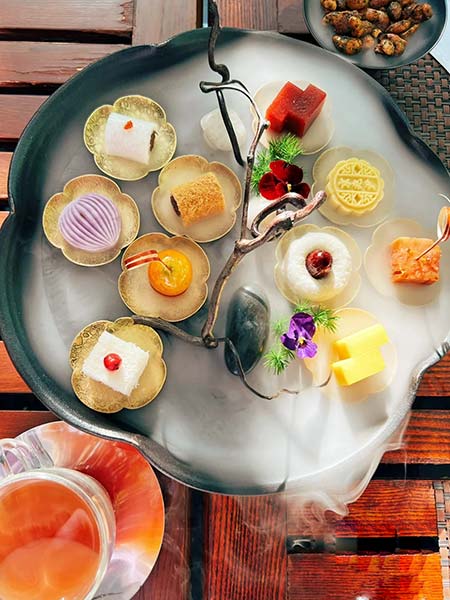
King’s Joy
This is the No. 1 vegetarian restaurant in Beijing. The restaurant’s building is a traditional Beijing courtyard house adjacent to the Lama Temple. Walking into the restaurant’s courtyard, the traditional decoration of blue tiles, red lanterns, and bamboo forest is very similar to the scenes of old Chinese movies. In addition to the dinner, Chinese palace afternoon tea is recommended.
Address: No. 2 Wudaoying Hutong, Dong Cheng, Beijing
Opening time: 11:00 – 22:00
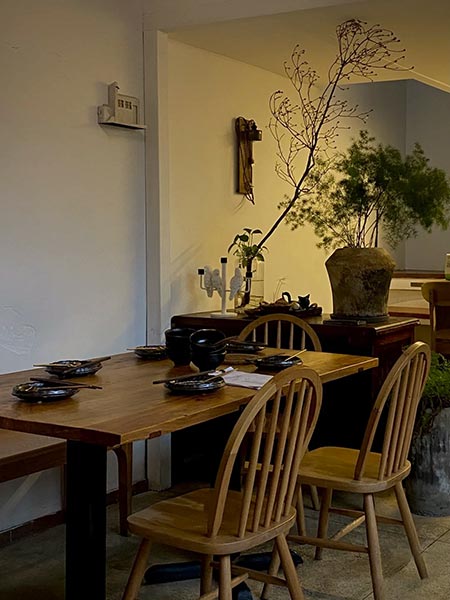
Soup Kitchen
Soup Kitchen is a restaurant that deals with home-style Chinese cooking. The entrance is small and easy to miss, but when you go in, it is wide open. The food tastes good, home-style, but not ordinary.
Address: No. 24 Wudaoying Hutong, Dong Cheng, Beijing
Opening time: 11:30-15:00; 17:30-22:00 (Closed on Mondays)
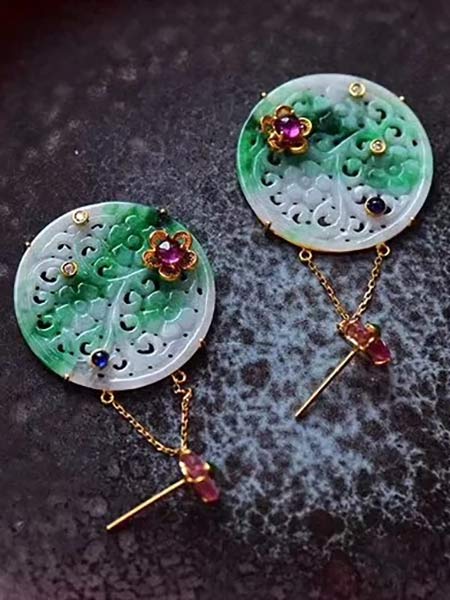
Meigu Workshop
Meigu Workshop is a Chinese-style Jewelry store with a collection of many designer pieces. All pieces of jewelry are handmade, and each piece is unique. Also, the jewelry can be customized according to preference.
Address: No. 14 Wudaoying Hutong, Dong Cheng, Beijing
Opening time: 10:00-21:00
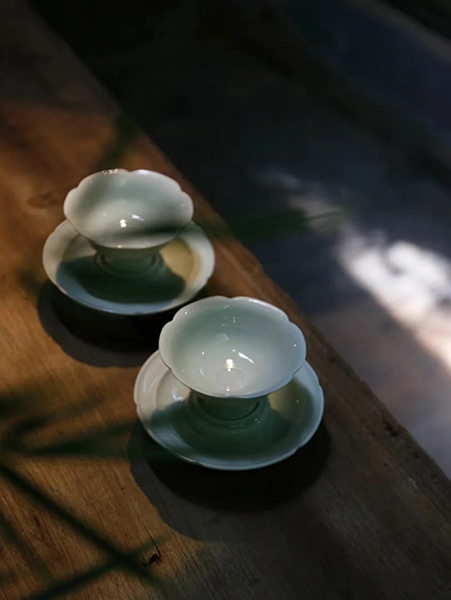
Nalan Celadon
Nalan Celadon is a small store that specializes in celadon. The porcelain is gorgeous, and the owner also gives some knowledge about celadon.
Address: No. 50 Wudaoying Hutong, Dong Cheng, Beijing
Opening time: 13:00-20:00
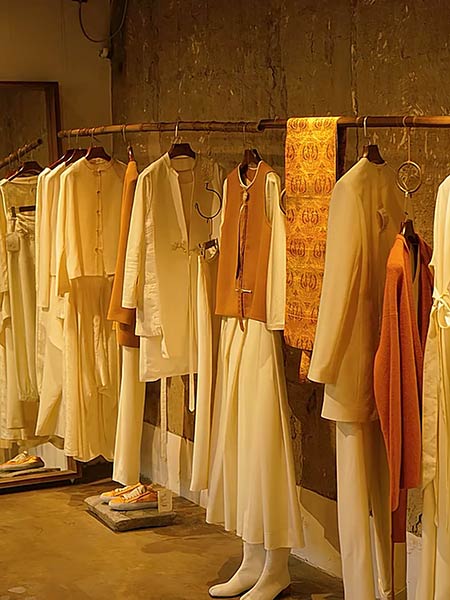
NagQu
NagQu is a store that specializes in traditional Chinese-style clothing. The store’s clothing is made of natural and comfortable materials, perfectly blending Chinese aesthetics into the garments. The store also has an exhibition of various precious tie-dye fabrics. The store owner will enthusiastically explain to customers about tie-dye.
Address: No. 67 Wudaoying Hutong, Dong Cheng, Beijing
Opening time: 12:00-21:00
#3: Guozijian Street (国子监街)
Guozijian Street is 669 meters long and has been built for more than 700 years. The street concentrates many historical and cultural heritages, such as Confucius Temple and Imperial College Museum, and is a protected cultural heritage street in Beijing. It is also the only street with archways preserved in Beijing. There are four beautifully painted archways on the street.
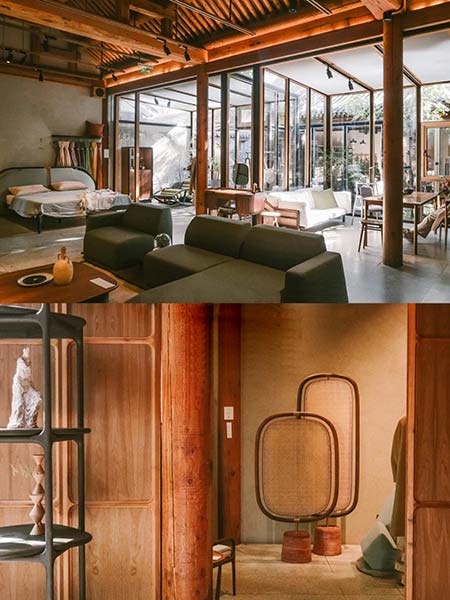
FNJI
This furniture store in a residential house is said to be the owner’s home that was converted. The store sells mainly new-style Chinese furniture in black walnut and ash wood, as well as utensils and household items. The design of the products is Zen-like, demonstrating the aesthetics of practical and simple living.
Address: No. 41 Guozijian Street, Dong Cheng, Beijing
Opening time: 11:00-19:30 (Closed on Mondays)
#4: North Luogu Lane (北锣鼓巷)
Autumn is the most beautiful season in Beijing. Besides enjoying the ginkgo and maple leaves, it is also a very different scenery to enjoy the ash trees in Beijing’s hutongs. To experience the most beautiful autumn in Beijing, you must visit North Luogu Lane. Walking into the hutongs, you will find yellow ash leaves covering the courtyard with grey walls and black tiles, giving people a warm and happy feeling. There are also many exquisite cafes and restaurants in North Luogu Lane. Sitting in the courtyard of a cafe or chatting with friends on the terrace in the autumn sun is incomparable.
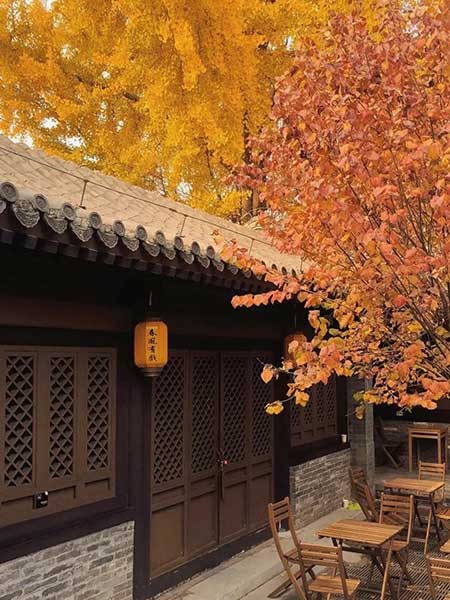
VOYAGE COFFEE
This is a coffee shop hidden in a small courtyard of a residential house. Large green plants hide the entrance to the yard. Half of the interior part of the cafe is an old house, and the other half is converted into a glass roof. In autumn, the courtyard is covered with golden leaves.
Address: No. 80 North Luogu Lane, Beijing
Opening time: 10:00-18:00
#5: Yangmeizhuxie Street (杨梅竹斜街)
Swipe right to view more pictures
More than 100 years ago, in the Republic of China, Yangmeizhuxie Street used to be a famous street for bookstores. The street was filled with guild halls, celebrity residences, and draft banks. Nowadays, there are many exciting stores scattered in old buildings.
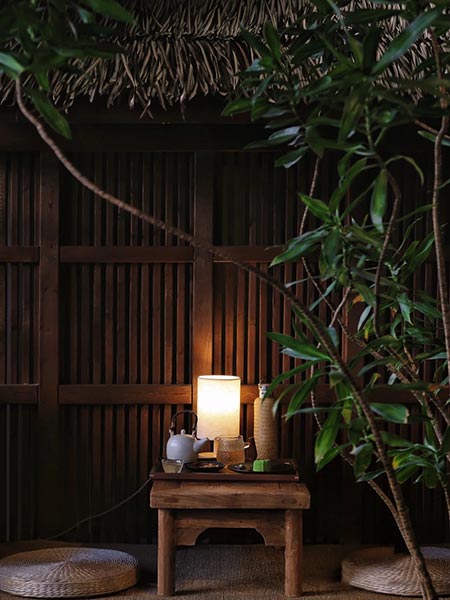
Caojian Courtyard
This store combines a courtyard design, a tea room, and handmade groceries. The store design is in the style of the Chinese Tang Dynasty.
Address: No. 38 Yangmeizhuxie Street, Beijing
Opening time: 10:00-19:00
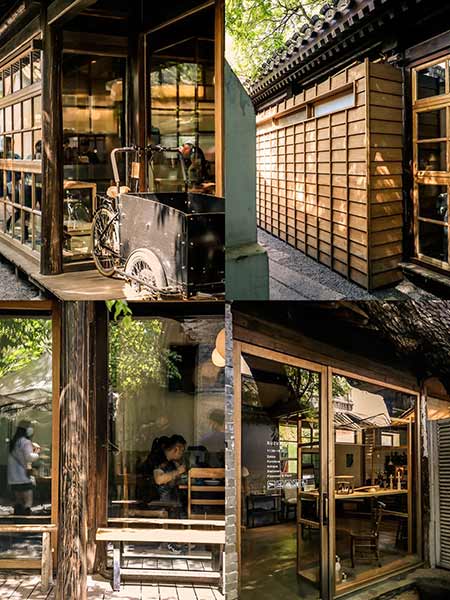
Suzuki Canteen & Suzuki Shop
The entrance to the restaurant is unassuming, but there is something about going inside that is like a Japanese garden and street. The courtyard contains a restaurant, the courtyard, and a store. The restaurant, tableware, and menu are very well designed. We recommend the Japanese beef hot pot and Suzuki meat pancakes. The owner collaborates with Japanese artists from time to time in the Suzuki store, exhibiting and selling utensils, floral pieces, furniture, and clothing.
Address: No. 10-14 Yangmeizhuxie Street, Beijing
Opening time: 11:30-15:00, 17:30-22:00
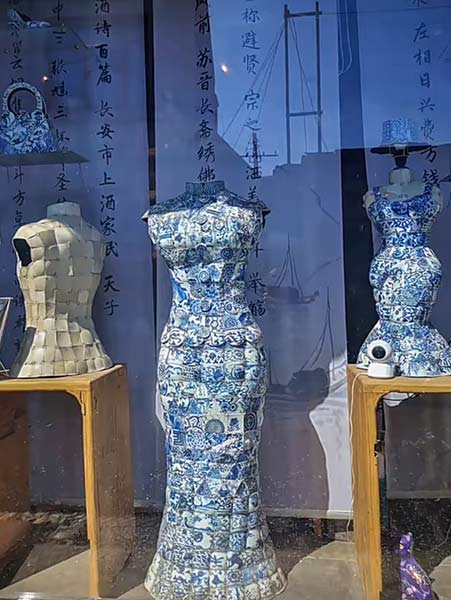
Porcelain Collecting Workshop
The store sells a wide range of Chinese porcelain. You will feel like entering a small porcelain museum when you walk into it.
Address: No. 35 Yangmeizhuxie Street, Beijing
Opening time: 10:30-18:30
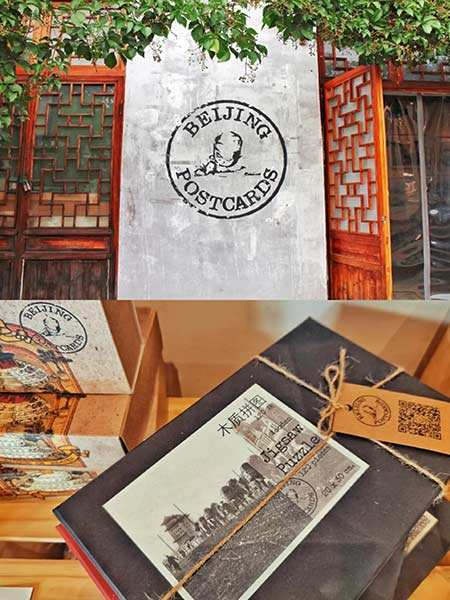
Beijing Postcard
The owner is an American who is very fond of Beijing culture. The products in the store come from the works of designers who love Chinese culture. The patterns and motifs use many old Beijing pictures, maps, photos, and other materials for practical function. Every month, the owner also holds several workshops to bring people to know the history of Hutong in his eyes, the story of the last emperor, etc.
Address: No. 97 Yangmeizhuxie Street, Beijing
Opening time: 11:00-20:00
#6: Liulichang Ancient Culture Street (琉璃厂古文化街)
In the early Qing Dynasty, antique dealers began to set up stores on this street. By Emperor Qianlong (1736-1795), this street had become a distribution centre for antiques, calligraphy and paintings, ancient books, inscriptions, and literary treasures. Today there are more than 100 stores dealing with antiques, calligraphy and painting, antique relics, jewelry, musical instruments, etc.
#7: Smoke-bag slanting street(烟袋斜街)
It is a small street of more than 200 meters. From the late Qing Dynasty to the 1930s, the street was mainly used for selling tobacco products such as dry tobacco pouches and hookah, as well as antiques, calligraphy and paintings, framed, stationery and snacks. The stores’ architecture here is simple and very characteristic of Beijing city, and it is a famous cultural street in the northern part of Beijing.
Today it is filled with snack stores and souvenir stores. Stroll through this street if you visit Beijing during the Chinese Lunar New Year. Taste a variety of Beijing snacks and feel the festive atmosphere during China’s most important holiday.

